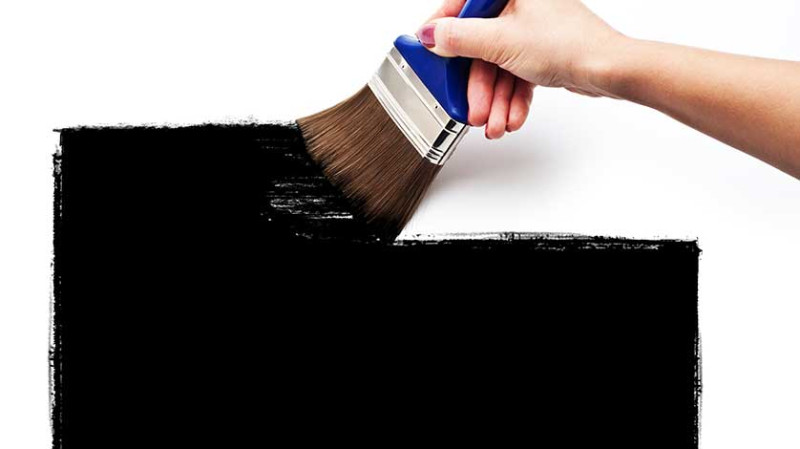
Cutting in is one of those DIY painting techniques that separates the amateurs from the pros. Whether you’re a homeowner refreshing your space, an architect meticulously planning interiors, or a tradesperson striving for that flawless finish, mastering the art of cutting in is essential. This technique ensures crisp, clean lines where surfaces meet – no wobbles, no drips, just professional-grade results that transform your decorating efforts.
Done right, cutting in can save you hours of cleanup and correction work. Done wrong, it can leave your walls looking uneven and untidy. The good news? Anyone can learn how to cut in like a pro with the right tools, tips, and patience. In this guide, we’ll walk you through everything you need to know about the technique and how to master it, whether you're painting around a window frame in a Victorian terrace in Leeds or cutting in along bespoke ceiling cornices in a Chelsea townhouse.
What Is Cutting In?
Cutting in refers to the process of painting straight lines with a brush where rollers can’t reach – typically along ceilings, corners, baseboards, window frames, trim, and edges. It's all about precision and control, helping you avoid the need for masking tape or the frustration of accidentally overlapping walls and trim.
Instead of taping off every edge, a skilled painter uses a steady hand and the right technique to paint a narrow strip (usually 2-3 inches wide) with a brush, forming a precise border. Once the edges are done, you can quickly use a roller to fill in the rest of the wall, blending it into the painted edges without a visible difference.
Cutting in adds a level of finesse to your decorating job – and when done properly, it can give the same clean look as taping but in half the time. It's a technique widely used by professional painters and decorators across the UK.
Essential Tools You’ll Need
Before you get started, gather the following tools and materials. Quality truly matters here – investing in decent tools will make the job easier and your results more professional.
- Angled sash brush (1.5–2.5”): An angled tip gives you better control and precision. Look for synthetic bristles for water-based paints.
- Painter’s cup or small paint pot: Easier to manage than a full tin and allows better brush loading.
- Extension pole for roller: Helps blend brush strokes with roller strokes seamlessly.
- Drop cloths or dust sheets: Protect your flooring and furniture from accidental drips or spills.
- Damp cloth or baby wipes: Great for quick cleanup of any mishaps on woodwork or trim.
Bonus tip: Consider using a paint grid inside your tray instead of loading rollers directly from the well – this will reduce splatter and ensure even loading once you move from cutting in to rolling.
Step-by-Step – How to Cut In Like a Pro
Mastering cutting in comes down to technique, patience, and practice. Here’s how to do it:
- Load your brush properly: Dip your brush about a third of the way into the paint, then gently tap (not drag) both sides against your paint pot. You want enough paint for good coverage without overload or drips.
- Start with a “guide line” away from the edge: Apply a short stroke about 5mm to 10mm away from the edge. This helps deposit extra paint and guarantees control as you ease towards the edge.
- Feather into the edge: With steady hands, bring the brush up to the edge using gentle, confident strokes. A smooth, controlled movement is better than short, choppy ones.
- Use the brush angle to your advantage: Let the longest bristles of the angled brush ride along the edge for precision. Think of them as your built-in guide rail.
- Keep a “wet edge”: Always cut in small sections (about a metre at a time), then roll over the area immediately with your roller to blend the edges while they’re still wet. This avoids lap marks and helps unify the texture.
By practicing this controlled movement and avoiding rushing, you'll find your lines becoming sharper and more consistent. It's like learning handwriting – tricky at first but second nature once you're comfortable.
Tips for Cutting In Around Tricky Areas
Certain areas require a bit more finesse, particularly around window frames, radiators, coving, or sockets. Here’s how to tackle the most common pain points:
- Ceilings: Try to cut in along the edge with your back to the wall so natural light falls evenly and you can see clearly. Use a ladder if necessary, and don’t overreach – stability is key.
- Skirting boards: Use a paint shield or try running a piece of cardboard near the floor for a neater finish. You can also use very light painter’s tape if you’re unsure of your steady hand at first.
- Outer corners: Always approach from one wall at a time. Cut in a few millimetres past the corner to avoid overlap when blending shades with the opposite wall.
Each new room layout presents unique challenges. The more you cut in, the more confident you’ll become with how paint behaves around different architectural features.
Common Mistakes to Avoid
Even experienced DIYers can falter by rushing or skipping the basics. Avoid these common pitfalls:
- Using too much paint: Overloading the brush leads to drips and streaks. Thin, controlled layers are always more effective.
- Going too fast: Speed often results in jagged lines. Precision work takes time, and your end result will reflect your patience.
- Cutting in a day ahead of rolling: Always cut in and roll the same area while the paint is still wet to maintain consistency in finish and colour depth.
- Skipping the quality brush: Cheap brushes shed bristles and make your lines sloppy. Invest in a good-quality brush for a professional look.
Learning to identify and avoid these mistakes will save you the frustration of doing the same job twice. Remember, prep and precision go hand in hand.
When to Use Tape and When Not To
Decorators’ masking tape can be a good support for absolute beginners, but it’s not a substitute for a steady hand. Over-reliance can lead to bleed-through or peeled-off paint if not used properly.
Here’s when tape can be helpful:
- When painting feature walls with contrasting colours
- On freshly painted surfaces you can protect with low-tack tape
- In homes with uneven wall surfaces or textured plaster
Otherwise, developing your cutting-in skills will be faster, more flexible and environmentally friendly (less waste from used tape).
Final Words – Practice Makes Perfect
Whether you're painting a single room or taking on a full home renovation in your free time, cutting in is a skill that pays major dividends in polish and professionalism. With the right brush, a bit of patience, and attention to detail, anyone can get those razor-sharp edges that elevate the look of any space.
If you're a trade professional or interior designer, refining your cutting-in skills can reduce job times, impress clients, and distinguish your service in a competitive UK market. As with all DIY techniques, practice is key — so don’t be discouraged by uneven lines at first. In a matter of days, you’ll be painting like a pro.
Looking for more pro painting tips and design inspiration? Check out our other blog guides or browse our toolkit approved by painters across the UK.





